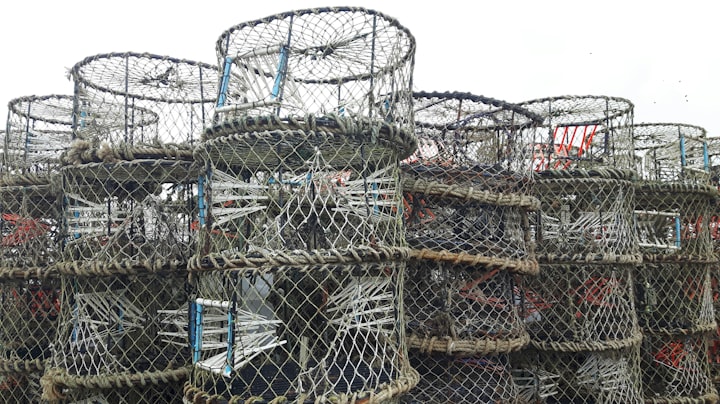Seaspiracy - Raising Questions About The Fishing Industry
Shocking Revelations About The Multibillion-dollar Seafood Industry

Last night I had takeaway fish and chips. Today I watched Seaspiracy and wish I could return the fish and chips.
Fish has always been a big part of my diet, especially since I gave up red meat. I thought it was fine to eat fish as long as it came from sustainable sources and was certified as dolphin friendly. After watching Seaspiracy, I’m questioning if any fish is safe to eat.
Seaspiracy is produced by the team behind 2014’s Cowspiracy and directed and narrated by a British filmmaker Ali Tabrizi. In the film, Tabrizi highlights the impact of commercial fishing has on the marine life and exposes a world of corruption.
The film illuminates alarming truths about the environmental destruction human behaviour causes to our oceans from plastic pollution to overfishing. Truths that Tabrizi claims the multibillion-dollar seafood industry wants to suppress.
However, Tabrizi’s starting point for the film wasn’t an expose on the fishing industry, but plastic pollution in our oceans. Dolphins and whales have fascinated him from a young age and now as an adult, hoping to combat plastic pollution, he has been donating and signing petitions for environmentalist organisations protecting the seas.
Wanting to do more, he investigates the increase of plastic in the oceans and discovers that majority of plastic pollution comes from the fishing industry. He also discovers that while the organisations he supports are making a big deal of the impact of plastic straws in our oceans, they neglect to mention the impact of commercial fishing.
What follows is a trip to Taiji, Japan where he secretly films dolphins being slaughtered as they eat too many fish. This leads to further revelations and upsetting footage including the mass slaughter of rare sharks to feed the shark fin soup market.
As the film progresses we learn that having the ‘dolphin safe’ logo doesn’t necessarily mean that no dolphins were harmed in catching the fish. As one industry insider admits, it is not possible for them to regulate all the fishing boats.
We also learn, with the help of some easy-to-understand graphics, how overfishing is even more damaging to the environment than deforestation.
Bottom trawling, a favoured method by commercial fishing companies as it catches large quantities of fish in one go, involves dragging heavy nets across the sea floor. These nets catch everything on their route, which leads to a huge amount of bycatch. Bottom trawling also damages the deep-sea corals and affects the biodiversity of the ocean.
As well as throwing light on the damage caused by industrial fishing and the questionable methods to keep costs down - such as the use of slave labour in Thailand - Tabrizi shows us that fish farming is not the solution some claim it to be.
His trip to a fish farm in Scotland reveals the shocking state of some of the salmon. They have lice infestation and infectious diseases and are fed wild-caught fish. And that the lovely pink colour we see on the farmed fish shouldn’t be trusted, as food colouring is used to make the fish look healthier and tastier.
What Tabrizi also brings home with this documentary is how important protecting our oceans, stopping overfishing and the killing of whales and dolphins are for the future of our planet.
This is because of a direct link between whales and the amount of oxygen in the atmosphere. Wherever there are whales, there is also phytoplankton, since whale poop contains iron and nitrogen, which the plankton needs to grow. Phytoplankton produces at least 50 per cent of the oxygen in our atmosphere. They also capture as much carbon dioxide as four Amazon rainforests.
Since the documentary streamed on Netflix, some people Tabrizi interviewed on Seaspiracy, have said the film showed their comments out of context. Maybe it did. As a viewer it is impossible to tell if they were taken out of context, but the statistics Tabrizi shares with us on the demise of fish in the oceans speak for themselves.
What is the solution? Stop eating fish? Maybe. I’m certainly taking a pause from eating fish while I do my own research. I would also recommend everyone to watch Seaspiracy and then make their own mind up.
A final thought. Whether you already have given up eating fish, or decide to do so after watching Seaspiracy, that still won’t solve the problem.
We know we would need millions of people to stop eating fish for it to have a real impact, and that is unlikely to happen. Therefore, more needs to be done to stop illegal fishing and other morally wrong practises and protect the sea life, our oceans and ultimately our planet.
About the Creator
Reija Sillanpaa
A wise person said, "Be your own audience". Therefore, I write fiction, poetry and about matters important and interesting to me. That said, I warmly welcome you into my audience.






Comments
There are no comments for this story
Be the first to respond and start the conversation.